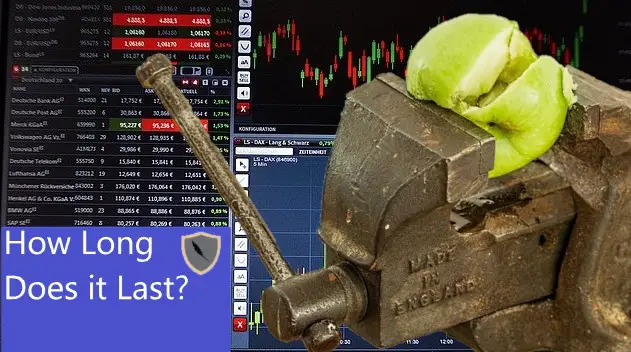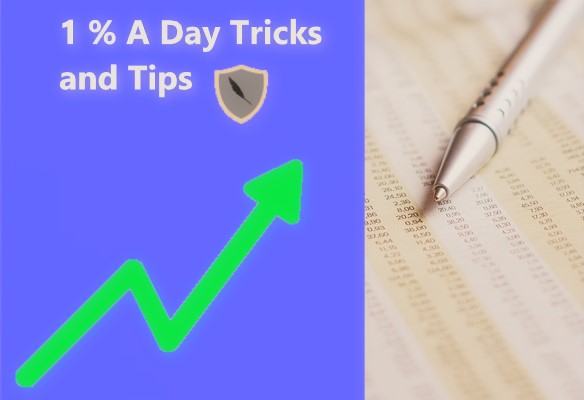There are two types of investors in the world; Amateur and Professional. The main differences between the two are their independent ROI or Return on Investment per year and their willingness to pursue higher returns in the market.
The average market return is between 8-10% per year. Professional investors will return substantially higher than that. If you can beat that number while managing risk in your portfolio then you are on the right track.
The 3 main skills that are needed to become a professional investor are proven and repeatable investment methodologies, risk management, and research ability.
You can never be a master at each of the 3 main skills. It’s a lifelong journey and the ability and willingness to learn everyday is a prerequisite of the job. This can not be understated. There exists a threshold between amateur and professional investors, crossing it takes a lot of effort and is not for everyone.
However if you are confident that you want to take the plunge then this article is a great place to start. Learning how to professionally invest will lead you to financial freedom over time or simply get you an extremely high paying job.
As always if you like content like this then you should subscribe to the newsletter and share on social media! Every share helps me help others generate wealth in the markets.
Without further ado, let’s jump right in.
Proven and Repeatable Investment Methodologies
It goes without saying that you need to be able to clearly define how you invest in the market to generate returns. How you decide to invest and generate returns is more important then the actual ROI itself.
This is because you are training yourself to spot key opportunities in the market. What will happen naturally over time is that, like any skill, you will get better at your chosen investment methodology the more you perform it.
For example, let’s say your chosen investment methodology is ‘value-investing.’ Over time you will come to understand exactly how the market values and prices stocks. You will hone your ability to spot key indifferences between a stock’s current price and its real valuation. As a result you will become a professional value investor so long as you clearly outline and practice your investment methodology.
A normal retail investor will simply buy what other people recommend. The retail investor won’t understand financial documents nor how vital metrics such as EBIT(DA) affect price valuations.
Finding a sticking to your investment methodology is vital to becoming a professional investor.
Some of the most common forms of investment methodologies are outlined below. The following list is in now way exhaustive, its goal is to give you an outline of what to expect.
Value Investing
Value Investing is one of the oldest and ‘purest’ forms of investing. Simply put, ‘value investing’ is just finding good stocks that are going for a great price. This however is much easier said than done.
Value Investing has become harder over the past two decades as markets are being auto priced by computer algorithms. As soon as a financial document for a company becomes public the company is auto priced.
Currently the best place to practice value investing is in the mid-cap companies. This is because these companies often are not auto-priced and have substantial upside growth potential. For a full article on how mid-cap’s are the ‘golden zone’ for value investing check out this article.
Why Mid-Cap Companies are the Best for Growth Investing
Value Investing is a great investment methodology to learn first. By dedicating yourself to this methodology you will learn vital skills that will help learn from others.
Long/Short Investing
The long/short investing methodology allows you to make money if stocks go up or down. This is because by going ‘short’ on a stock you are betting that the price will fall in the near future.
As the name might suggest you are going to be going both long on stocks you think will do good and going short on stocks that you think will do bad. The long/short investment methodology does not put as much weight on company research as value investing. Further the long/short methodology gives you flexibility in the market.
In order to properly engage with this methodology however you will need to understand the mechanics of shorting in the stock market. To summarize this you are simply borrowing stock from other people and selling it instantly. In the future you will have to buy back the stock to give it back to them, hopefully at a lower cost per share.
For a full article on shorting and how to use it to your advantage check out the following.
Shorting a Stock Explained: Making Money When the Stock Goes Down.
Arbitrage Trading
Arbitrage trading is a unique strategy where you can make money regardless of the price direction of the underlying stock. You are simply looking to exploit differences in numerical valuation by buying and selling limit orders to ‘scalp’ a percentage off the top.
The return on arbitrage trading is usually very small but the risk is also small as well. Because of this a lot of professional investing funds will employ arbitrage trading to lower their overall risk to market exposure.
A really fun way that I use arbitrage trading is a strategy called ‘pairs-trading.’ This is where you inversely buy and sell two stocks that in theory will move opposite of each other over time. Some iconic pairs trade are Coke and Pepsi, Dominoes and Pizza Hut, and Walmart and Target.
For a full article on how to get started pairs trading check this out.
Pairs Trading Stocks: Everything You Need To Know To Start Making Money
Risk Management
The next major skill for aspiring professional investors is risk management. This is by far the most important thing to learn and will directly result in increased profit over time.
In the above image we can see that as we pursue a higher yearly goal percentage gain our total risk in our portfolio increases in proportion. This total risk is a silent killer in portfolios.
You can’t avoid increased risk as you pursue higher gains. This is an unfortunate reality of investing. As a result, the name of the game for professional investing firms right now is “risk adjusted returns.”
Simply put, a true professional investor cares more about lowering risk in a portfolio than they care about increasing total gain. You need to learn how to lower or even reduce your total risk as you pursue higher returns.
For example, anybody can go to a casino and play poker. A professional gambler however will be able to move the odds in their favor by reducing their risk in every hand.
The goal here Chronohistoria is to make you the professional poker player at the table. One of the major skills to do this is Risk Management.
So how do we lower risk in our portfolio? I’m glad you asked. One of the easiest ways is to simply hedge against your investment.
How to Hedge to Reduce Risk
In the above image we split our potential investment in two. Around 80-90% of our total capital went to investment 1 while the remainder went to our hedge (10-20%).
The hedge moves opposite of our first investment, as such when investment 1 falls in price then in theory the hedge will rise. As a result your total risk is lowered in the portfolio.
Hedging however is an artform and is never perfect. That’s why we only dedicate 10-20% to a good hedge and around 5% to a bad/normal hedge. The quality of hedge is based on how inversely it moves in relation to the main investment.
Hedging is by far the easiest and most effective way to reduce total risk in a portfolio. The other common way is to just hold cash and inverse the U.S dollar with gold.
Research Ability
Now that you have been armed with an investment methodology and practiced managing risk, it’s time to go out and find opportunity.
The only way to do this is to perform your own research on potential stocks. Knowledge is king here, and it’s easy to acquire the right knowledge.
The best place to start researching any potential investment is your local countries’ exchange regulation committees. Here in the U.S we have the Securities Exchange Committee, or the SEC.
Most exchange committees regulate what stocks are allowed to be publicly traded on their exchange. They force companies to publish reports that outline their financial situation, the current sector forecast, and any risks that might impact the stock.
The SEC financial reports are an amazing opportunity to peer under the hood of the potential investment company to see exactly what they do. Further, you can see how well their business model performs and how much money they make.
I highly recommend glancing at the SEC website to get an idea of what I’m talking about. You can find the link to their website below.
Once you have navigated to the financial reports then it’s just a matter of reading. Never invest off one financial report, instead you should read multiple ones including competitors to the potential investment company.
The reason behind this is simple, companies will lie in their reports. If you read one or two competitors then you can get an accurate understanding of the target companies financial situation and products.
Simply put, you need to read everything you can. Here is a good article to get you started.
3 Steps for Making Consistent Money in the Stock Market with Pictures.
Conclusion
Learning the 3 major skills will allow you to become a professional investor. You will start the transition process and change. You will also start to notice a change in your investments, the more time you spend in the market practicing then the more money you will make.
It has changed my life, and I am confident that with ample effort you will change yours. If you have any questions on the process feel free to ask, I am always available to help.
As always if you enjoy content like this then you should subscribe to the newsletter and share on social media. It really helps and is much appreciated!
Further, you can check out some of the other posts below.
-
How Long Does a Short Squeeze Last? (3 Answers)

What is the time frame for you short squeeze? Well here is everything you will ever need to know to determine how long it will last.
-
Why You Still Own a Stock After It’s Delisted and How to Sell It

Do you still own a stock after its delisted? How do you sell it? Don’t worry the stock is still worth money and here is how to sell.
-
Can You Make 1% A Day in the Stock Market? (3 Steps)

Making 1% a day in the stock market is hard but defiantly doable. Here are 3 simple steps to helping you achieve this return.
Until next time, I wish you the best of luck in your investments!
Sincerely,



